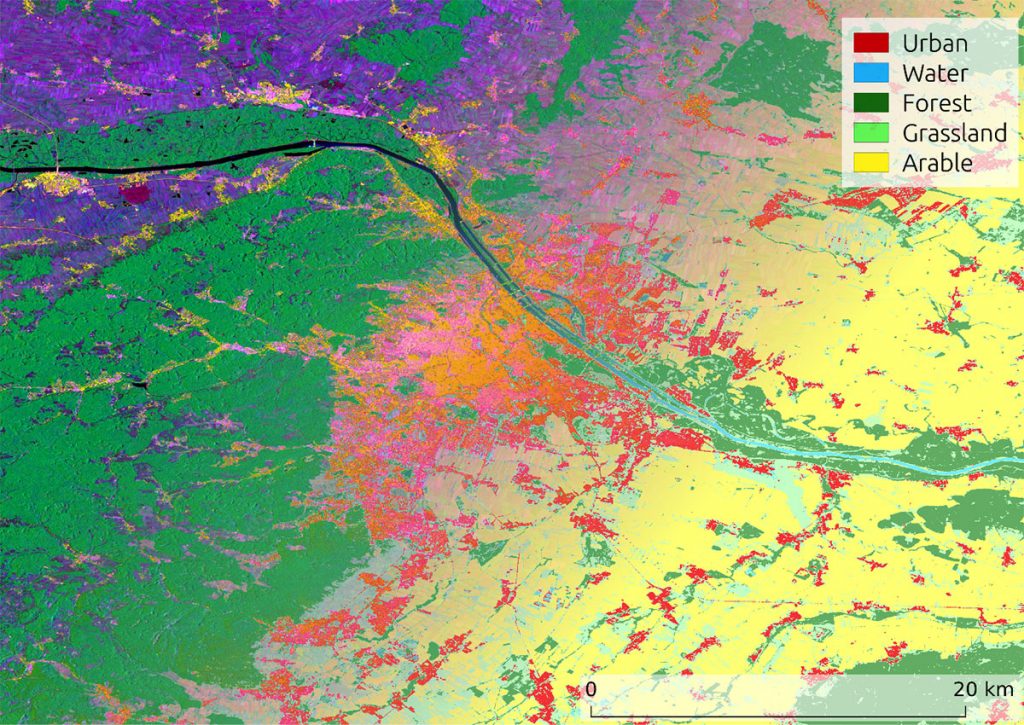
Copernicus Sentinel-1 provides reliable, repeated wide area monitoring with cloud penetrating capabilities. This allows for increased availability of dense time series, which are an important asset for measuring the pulse of our planet. The potential of turning high-level SAR products into relevant information is huge, considering that almost constant cloud cover affects large parts of the world. The timeliness of information coming from SAR data can therefore play a crucial role in helping to respond to many global pressures such as food security, emergency response, deforestation and urbanisation.

Copernicus Sentinel-1 is a unique SAR system in many ways. The globally systematic observation within an orbital tube of 100 meters allows for both the creation of dense time series of radar backscatter, as well as for the systematic generation of interferometric coherence. The combined use of both information layers has been shown to provide more accurate observations for a wide range of land surface parameters. Furthermore, dual-polarimetric H-A-Alpha decomposition parameters can be derived for each scene that characterise the scattering behaviour on the ground, based on the combined amplitude and phase measurements of the backscatter signal.
This activity explores the added information content from the combination of these high-level SAR products, including more advanced timeseries and time-scan products produced by the Open SAR Toolkit (see tools section), when used as distinct features in ML-based EO applications. The respective data analysis includes various domains ranging from land cover to crop type mapping as well as tree height estimation and building footprint detection.
Preliminary results show that, in most cases, the combined use of backscatter, interferometric coherence and polarimetric decomposition parameters boosts the performance of ML algorithms used for qualitative as well as quantitative estimates of land surface parameters in general. While single images from Sentinel-1 are affected by distinct environmental conditions, multitemporal statistics calculated from dense time series single out those effects and allow for results comparable to optical data across various applications. In particular, the combination of multi-temporal information from the consecutive interferometric coherence and the radiometrically normalised radar backscatter unleash the full potential of SAR data, whereas the polarimetric decomposition parameters do not add significant added value in most cases.
Share